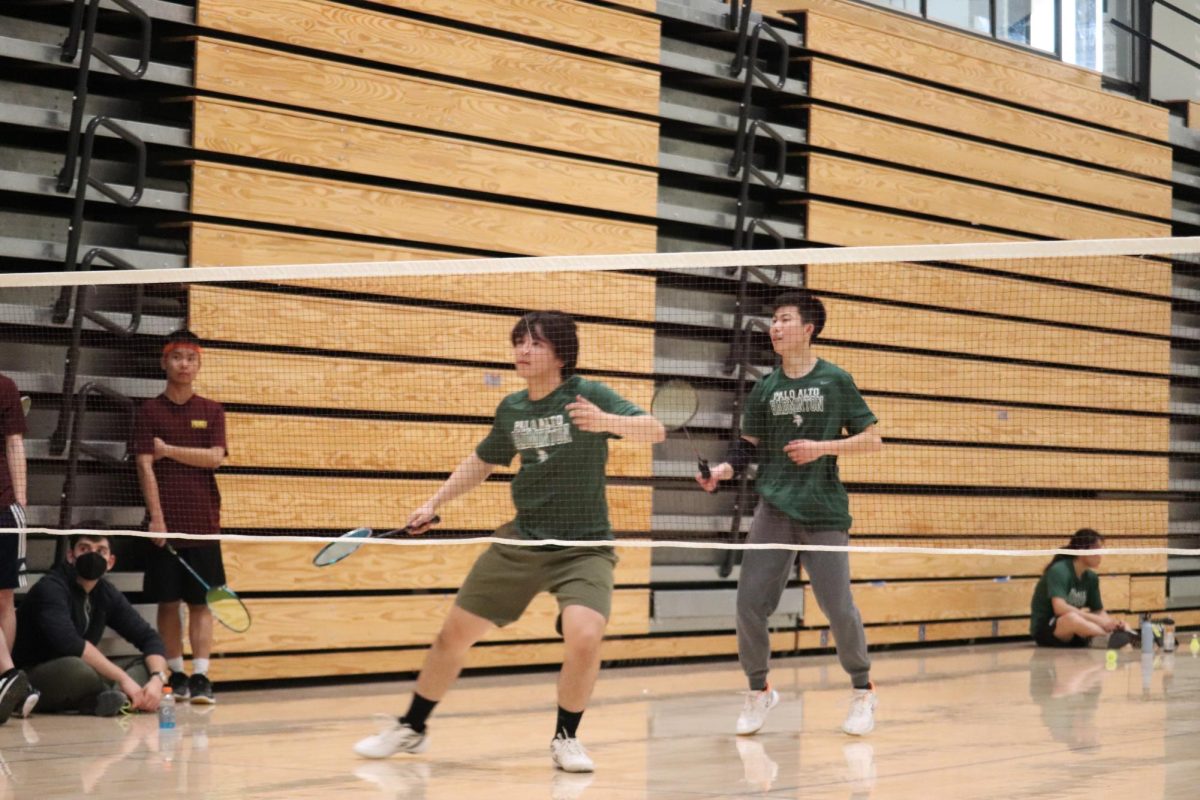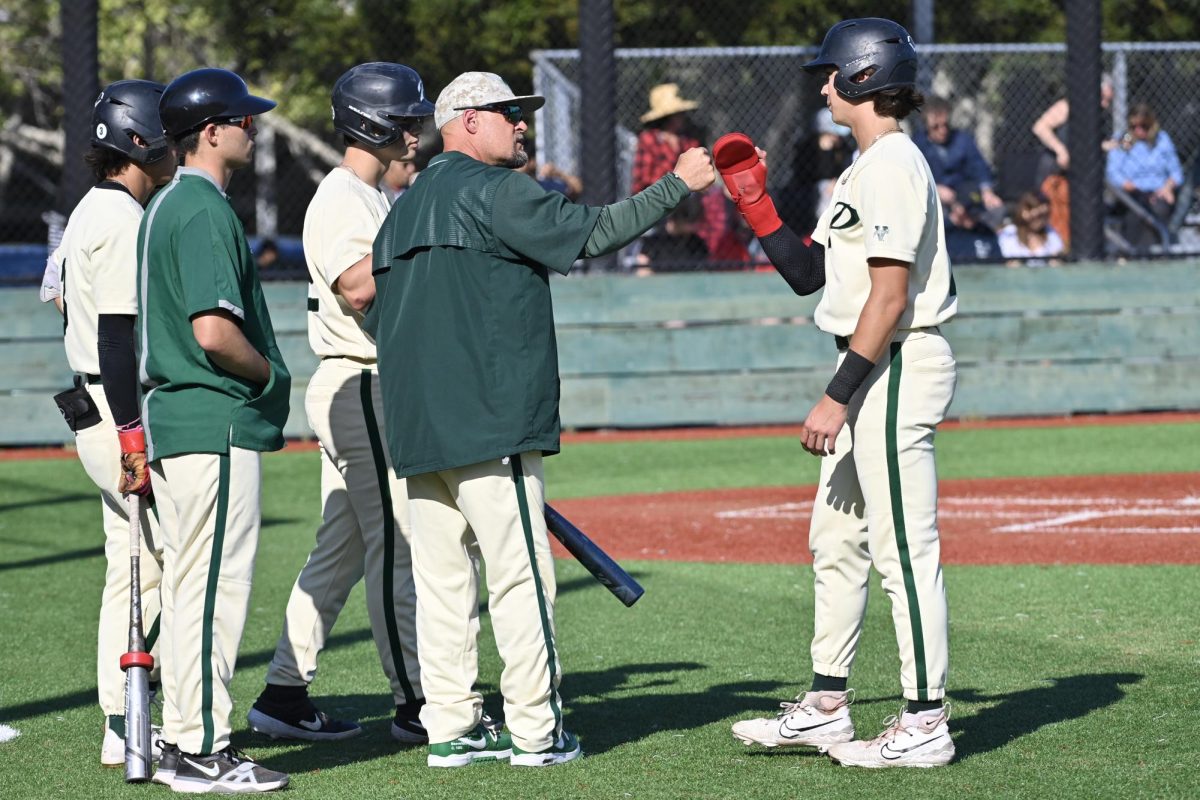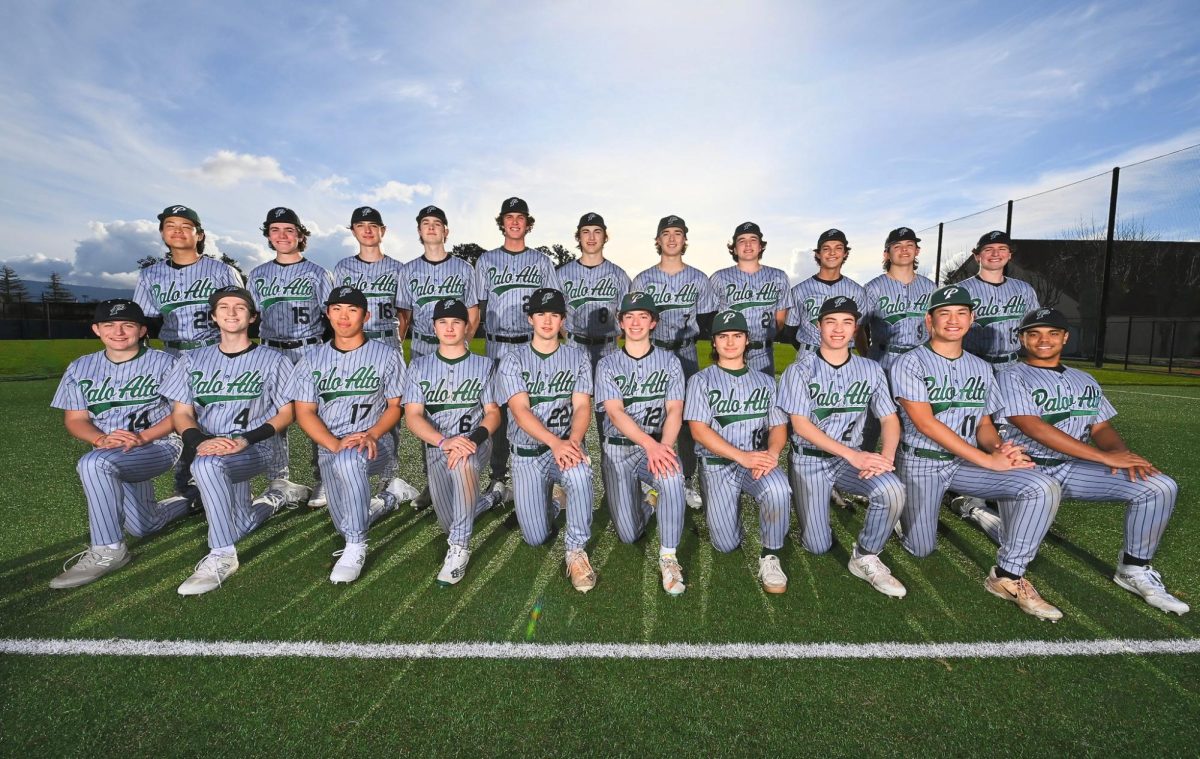Aldis Petriceks (‘13) walks into the big gym on a chilly Saturday afternoon. He sits down, ties his shoes, and checks his phone. The clock on his phone reads 12:50 p.m, and he hits the floor with his teammates at exactly 1 p.m. Petriceks, with his jersey soaked with sweat after a grueling practice, walks back towards his phone, unties his shoes, and checks the time. His phone now reads 4 pm. Petriceks just completed a three-hour practice for the varsity basketball team.
Many Paly athletes like Petriceks have encountered practices that have reached lengths of up to three hours. In Petriceks’ case, his practice happened to be on the weekend, but athletes throughout many sports at Paly have been subject to extensive workouts during the school week as well. Whether its the football team running drills well into the foggy evening or the basketball team working out in the gym, it is now commonplace to see Paly teams practicing for upwards of three hours a day. The athletes that play these sports sit down start their homework at 9 p.m. and wonder if playing their sport is really worth it.
This raises an important question: How much is too much?
The main issue for athletes has been not so much the intensity of practices but the duration of them, and how they begin to influence life outside of school. Although intensity does play s a role, the length of practices is what tends to rub athletes the wrong way. Many athletes believe that practices drag on for hours on end, and they believe shorter, more efficient practices are ideal for athletes and coaches alike.
“Practices are just flat-out too long,” Mark said, whose name has been changed upon request. “I feel like I am going to three hours of hell rather than three hours of something that should be enjoyable.”
Athletes have not only expressed concern over how long practices are, but also over how these practices affect academics and life outside of school.
One of these athletes, Eilon Tzur (‘13), found it difficult to juggle both sports and academics this year. Tzur recently had to quit the varsity basketball team as a result of the long practices and the time commitment that comes with being a varsity athlete. “I had to quit basketball this year because practices were very long, and I was having trouble balancing sports and school,” Tzur said.
Tzur understood the commitment that it took to play on the team, but was weary of the effect it had on his academics.
“We would have three hour practices on the weekends, and they would take so much out of you that you wouldn’t have the energy to do anything the rest of the day, including schoolwork,” Tzur said.
However, Tzur is aware of the extreme time commitment required to play varsity sports.
“I do think practices need to be toned down a bit, but I do understand that’s what it takes at the varsity level,” he said.
Many athletes believe that practices should be shorter, but they understand that with shortening practice time, intensity of drills and scrimmages might pick up.
“I can deal with shorter but more intense practices but I hate the slow, long practices,” Mark said. “I don’t think the players like being out there for that long. I don’t even think coaches like being out there for that long. It would just help both sides to shorten practices.”
When asked about how long coaches are advised to have practice, Principal Phil Winston responded in an email interview that there are no specific rules that are in place.
“We give coaches guidelines, but no rules,” Winston said. “Folks are professionals and understand the needs of our student-athletes.”
However the Central Coast Section (CCS) rulebook states in Article V, Section 3 that “Any single practice session shall be no longer than 3 hours in length.” It further goes on to say that “Penalties are also outlined for violations of this by law.”
“We’ve had a couple practices on the weekends that have gone a over three hours,” Petriceks said.
However, not all Paly athletes are subject to long practices. Kalen Gans (‘12) wrestles on the Paly varsity team and does not endure the same length of practices that other Paly athletes do.
“Practices are around two and a half hours, and for wrestling they are perfect in terms of length,” Gans said. “They aren’t too long, but we do get a solid workout in.”
The National Center for Sports Safety released a study on how long workouts affect the athletes themselves, and their respective teams. The study cited many side affects of over-training, but focused on three main effects that are possibly influential in a team setting. These potential side affects were: lack of motivation to practice, getting tired easily, and irritability and unwillingness to cooperate with teammates. And, according to the National Athletic Trainers’ Association, more than half of all sports injuries occur at practice. According to these studies, by training for longer period of time, coaches may be in fact hurting their team rather than helping it.
AP Psychology teacher Chris Farina offered his professional opinion on how long practices affect athletes mentally.
“The most common psychological effect of extended participation (and/or specialization) in a competitive sport is burnout,” Farina said in an email interview.
Tzur echoed Farina’s opinion on the fact that athletes can burn themselves out.
“Practices take up a lot of time, and they take so much out of you physically and mentally, [that] it is hard to get work done after a grueling three hour practice,” Tzur said. Shorter practices might ease the mental and physical toll on athletes.”
Farina went on to include some negative effects of over-training.
“Negative effects include fear of failure, stress, poor grades, lack of socialization outside the sport,” he said.
Tzur once again reiterated Farina’s conclusions.
“The amount of time I put into sports does not outweigh the importance of school and other things going on in my life,” Tzur said. “I can’tsay that I have lost the passion for the sport but I can say I have lost some interest, which directly affects the way I play.”
Gans agrees with Farina how practice affects athletes outside of school.
“Outside of school, practice affects me because I feel so tired and it’s hard to get homework done, or anything done for that matter,” Gans said.
Paly athletic trainer Josh Goldstein cites rest as a factor of why athletes are “burned out” by the end of the week.
“Rest is a big component, and when you are practicing for upwards of 3 hours a day, every day, you lose that ability to rest,” Goldstein said.
Tzur agrees with Goldstein on the fact that rest is pivotal for athletes, and he believes that lack of proper rest can increase stress.
“By the end of the week, my body was pretty much drained, and throwing games in there, its hard to find time to rest your body,” Tzur said. “Some people may handle the stress better than others but in my case it was just too much.” Varsity football player Alec Furrier (’13) feels that Paly’s success with athletics has contributed to the drastic increase in practice time.
“Paly sports [teams] are out there competing and beating many private schools out there so I think coaches want to try to elevate their teams potential to try to emulate how the private schools work, ” Furrier said.
However, Furrier does not agree with the way coaches try to elevate their team’s performance.
“I understand that coaches have to get a certain amount of things done every practice but sometimes I think they need to look at it from the athlete’s perspective,” Furrier said.
The consensus among athletes at Paly is that practices have been extended because of the success Paly has seen in atheltics. Multiple CCS and state championships in various sports have caused coaches to try to elevate the standards and expectations of their teams. However, coaches may be doing this at a risk, putting their player’s bodies, well-being, and enjoyment on the line.





